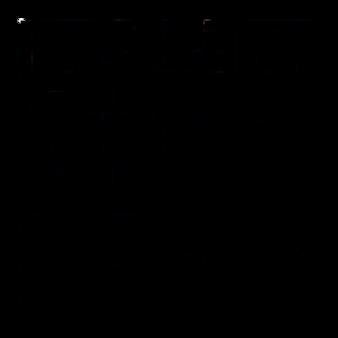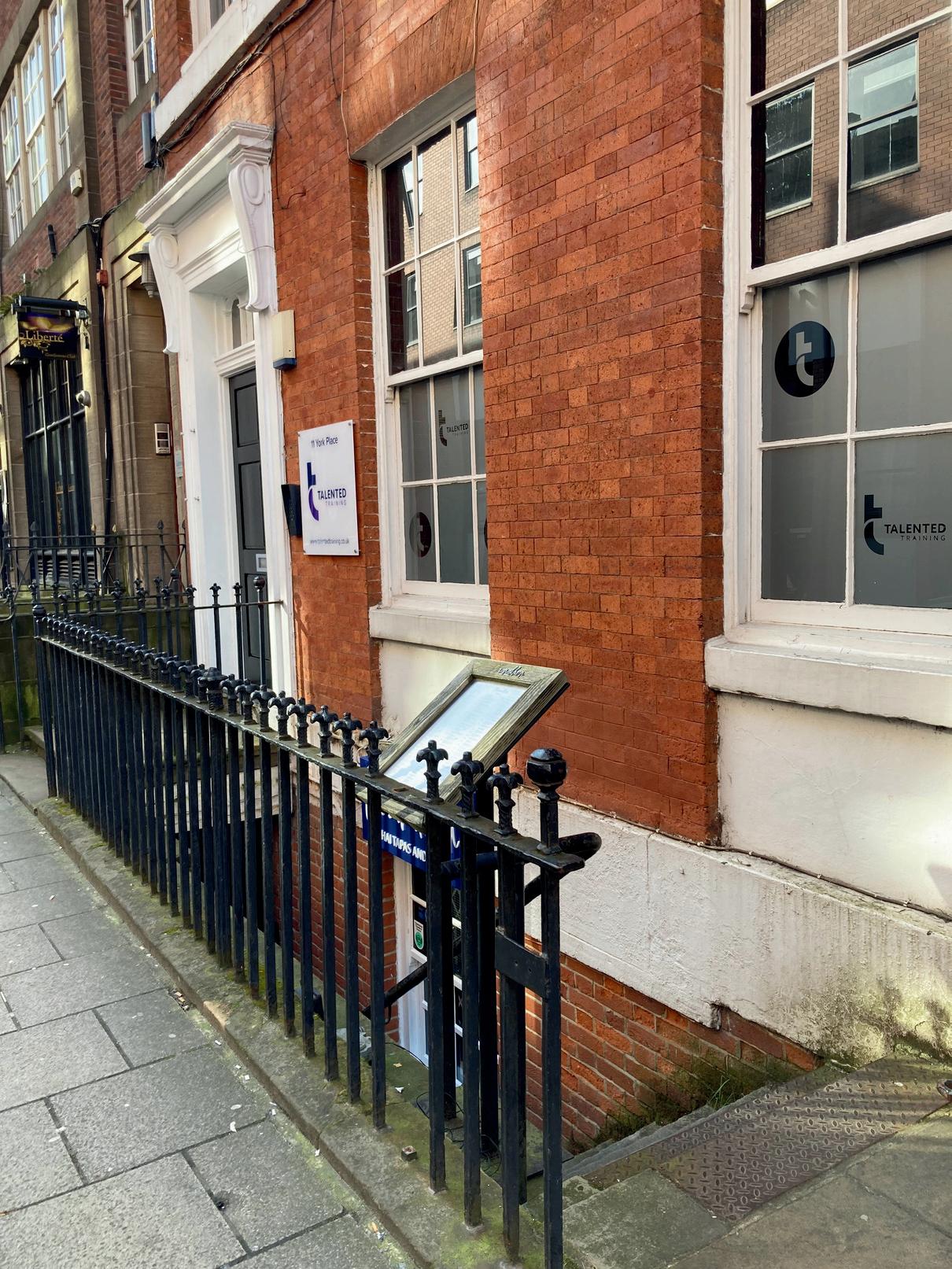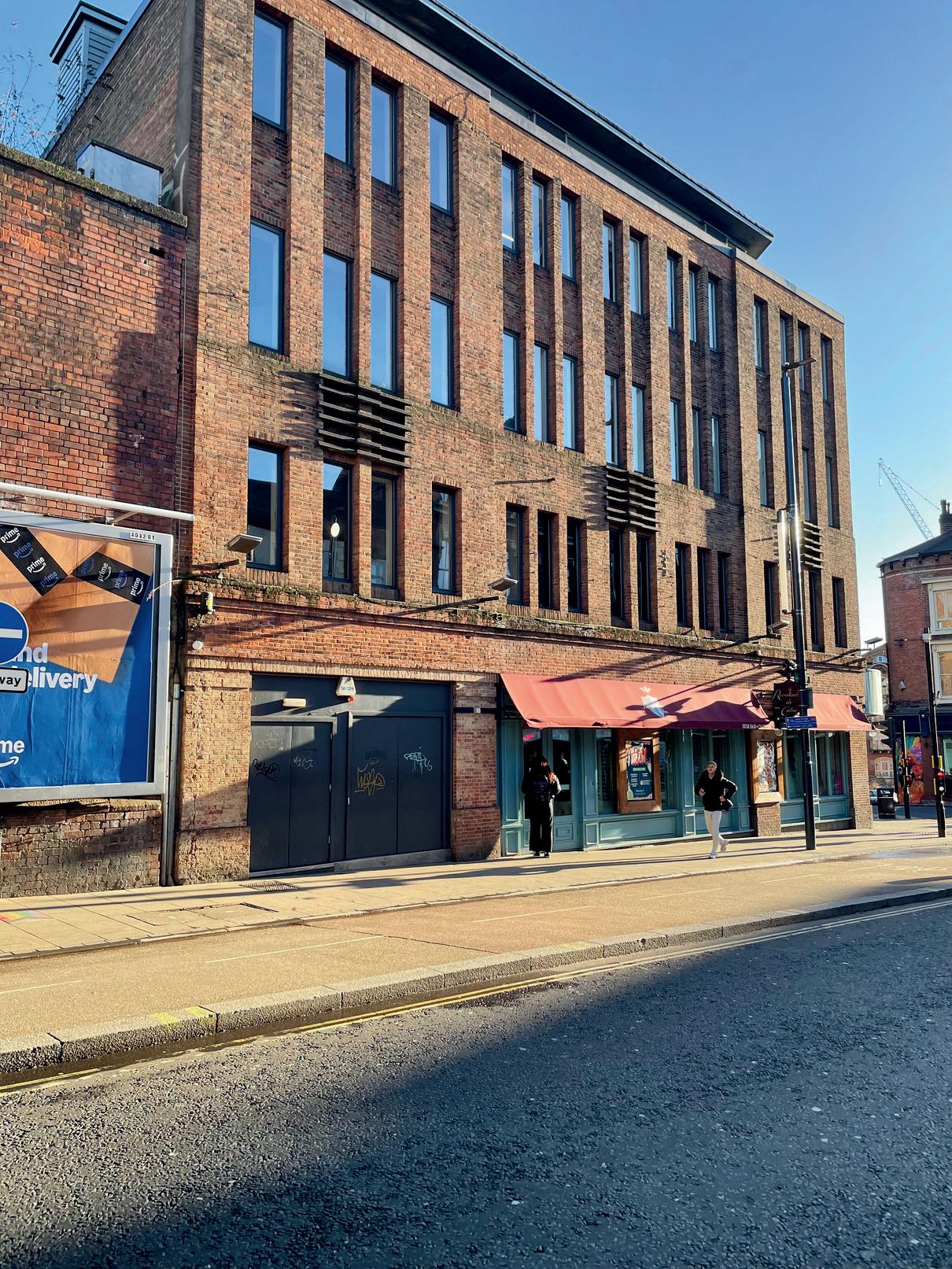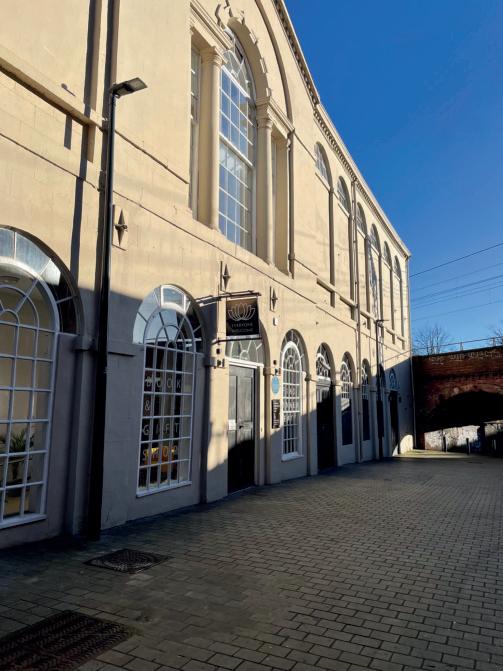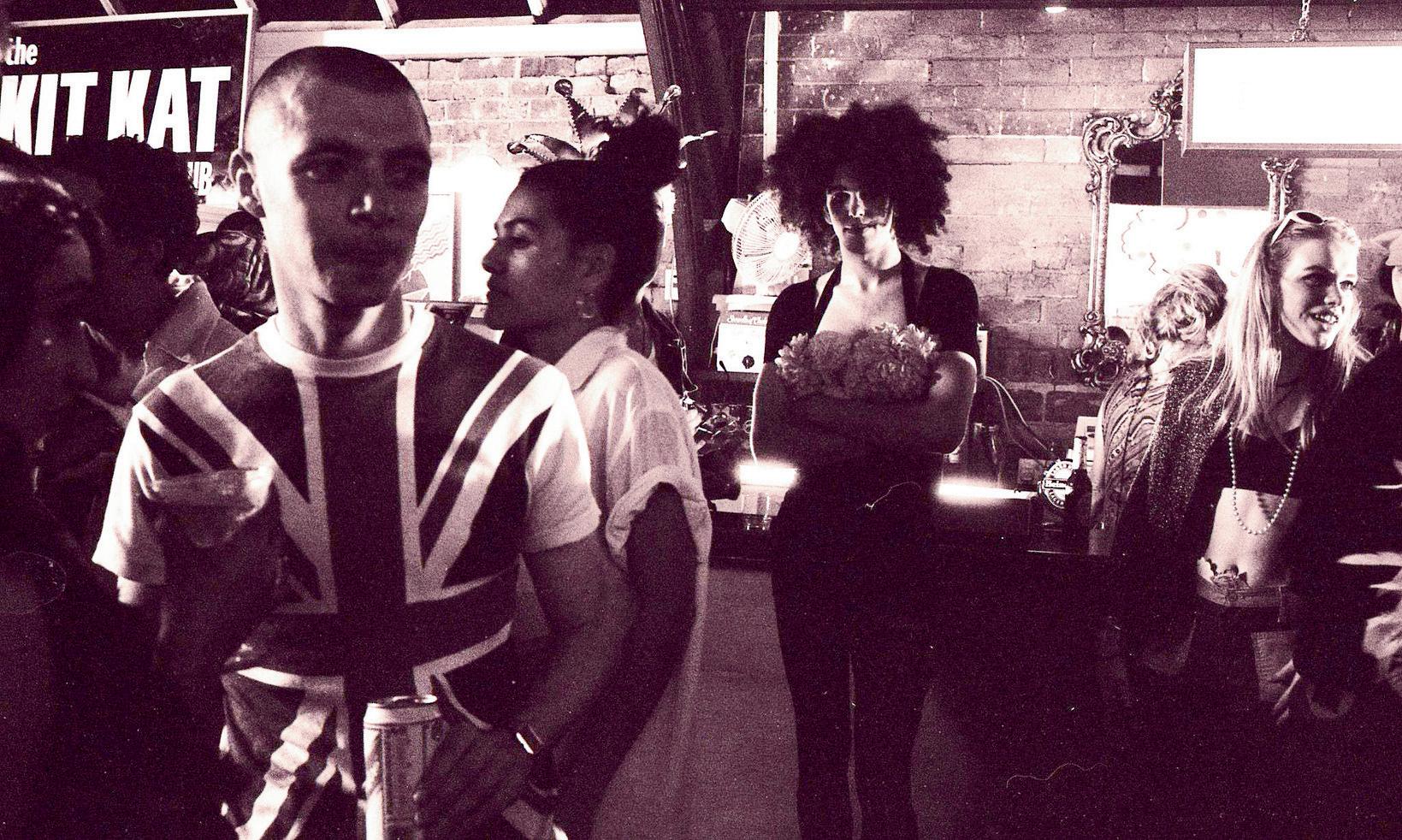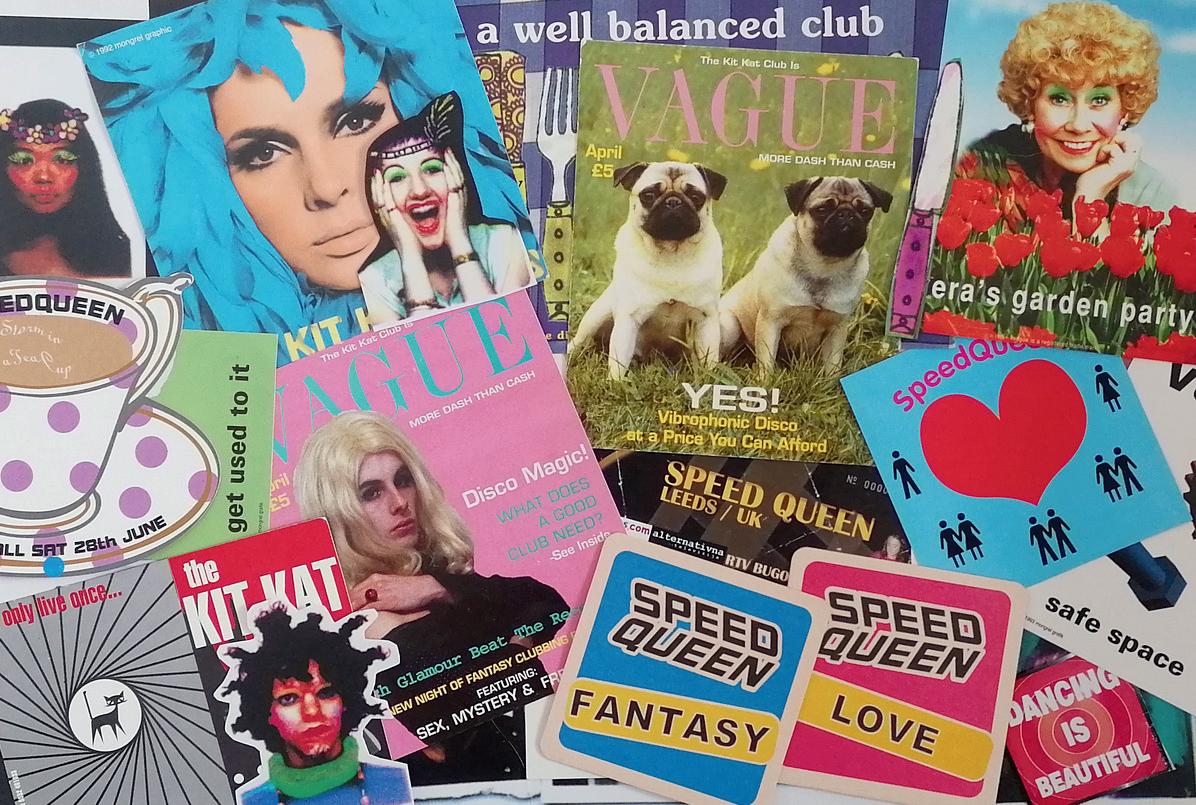INTRODUCTION
In the 1990s Club Culture took Leeds by storm. With the emergence of acid house and raves, Leeds became a vital destination on the club scene, with some of the best club nights in the country being set up here, such as Back 2 Basics and Speedqueen. Venues were nearly always open six or seven nights a week in the 80s and 90s, even if there were hardly any customers. Due to the strict licensing laws, all the pubs and bars closed at 11pm so if you wanted to listen to music, dance, meet people, socialise, dress up, have fun or just stay out, you had to go to a club, because clubs were open until 2am. This meant they played a much more vital and central role in many people's lives than they perhaps do now.
In the 90’s the club nights were almost exclusively run by outside promoters working with the club owners. Most of the well-known and successful nights such as Ark, Back 2 Basics, Hard Times, Kaos, Soak, Speedqueen and Up Yer Ronson moved from venue to venue around the city due to change of club ownership, money and creative differences, venue capacity etc. Fall outs were very common because there was a lot of cash, alcohol, drugs and egos involved! As club nights moved around, promoters often changed the names of the clubnights, reinvented them and created new ones, as did venue owners, so a lot of the information, stories and people's recollections of this very heady and ephemeral time are not always accurate… but this just adds to our understanding of this incredible moment in Leeds history as a very creative, dynamic and independent clubbing scene. This walk is written by Suzy Mason with a key focus on LGBTQ+ and women in Leeds night life, and she uses her personal experiences to tell stories of Club Culture in Leeds.
Suzy Mason is the co-founder of the first inclusive safe club spaces in Leeds in the 90s: Vague and Speedqueen. She also worked with Nato on peace building initiatives through dance music for young people affected by the Balkan conflict, and she set up only non-gendered club fashion boutique. She is currently an archivist of Leeds club culture from a female and LGBTQ+ perspective.
THE ROUTE
Start: The Warehouse, 19-21 Somers Street, Leeds LS1 2RG
End: The Brotherhood of Pursuits and Pastimes, 54 New Briggate, Leeds LS1 6NU
Length: approx. 1.5 miles
Suzy Mason. Credit Suzy Mason
The Warehouse, 19-21 Somers
Street, Leeds LS1 2RG
The Warehouse is an important venue because it is the only venue in Leeds that is still operating as a club with its original name from when it opened in 1979.
It was set up by an American, Mike Wiand, and hosted disco and indie nights, and live music gigs including: Frankie Goes to Hollywood, Duran Duran, the Village People, Toyah, Siouxsie And the Banshees. It was the go-to club for anyone who wasn't mainstream. Mark Almond from Soft Cell was the cloakroom attendant there. Ian Dewhirst was the main DJ but the named DJ culture hadn't started in the 80s. In the late 1980s acid house raves started there with Joy and Kaos run by Tony Hannon and then in the early 90s it became home to Vague and later Speedqueen. Vague and Speedqueen were very important nights as they challenged the status quo in clubland and actively addressed the blatant homophobia, sexism and racism that was a part of Leeds clubbing scene at the time. Vague was the first purpose built ‘Safe Space’ inclusive mixed night in Leeds with written codes of conduct and a strict membership and door policy. The door was run by Jo Jo who went on to host the Breakfast Show at Capital Radio).
Vague was also awarded the first late licence in Leeds to stay open and play music after 2am (without alcohol) on a Saturday night under the council’s ‘24 hour city’ initiative. Suzy remembers going to the magistrates court and explaining to Lorna Cohen, a visionary councillor, that their customers were in danger from homophobic and sexist attacks walking across the city and waiting in taxi queues alone (this was before uber, smart phones and the internet).
Speedqueen was set up in the 90’s as a social enterprise before they existed as a business model and was run by women who worked on many community initiatives including with NATO on peacekeeping and reconciliation programmes through dance music with displaced youth in Bosnia after the Balkan conflict. Adele Roberts was a resident DJ there in the 2000s before she moved to Radio 1.
The Warehouse. Credit R Hill
11 York Place, Leeds LS1 2DS
Follow Somers Street south into Queen Street, then turn left into York Place.
Number 11 was Soul Kitchen. In the 90s a lot of independent bars opened in the city. Before that there weren't really many good places to go out. Most people used to go the Faversham (Springfield Mount). Soul Kitchen was a pre-club and café bar set up in the mid 90s by Cally Walker. Cally was the first female to be granted an independent bar licence in Leeds city centre. She was so inspired by the club scene that she quit her job in a car showroom and opened a bar, staying in private enterprise for the rest of her career. She ran the pre club bar for Speedqueen and many after parties for the big nights and guest DJs such as Back 2 basics, 20/20 Vision record label, Carl Cox, John Carter, Sarah Cox and Little Louie Vega.
Drag queens used to come on the train from Manchester and walk to her bar. They would get into full drag in her basement before going to the Warehouse as it wasn’t safe to walk around in drag. The after parties sometimes used to go from Friday night/ Saturday morning to Monday morning. There was never any trouble or security needed as this area was only offices and there were no people living there.
City Square, Leeds LS1 2DE, between Queens Hotel & Leeds Station entrance
Continue along York Place, turn left into King Street, then right into Quebec Street, which opens out into City Square.
Here, between The Queens Hotel and the station entrance was once a nightclub (and before that it was a cinema). It used to have a small obelisk perched on the flat roof. The club was underground and it had a coloured flashing disco floor. Ark had started at Leeds Polytechnic student union in 1990 and this was another location for the night in the early 90s. DJs Stu Allan, Rob Tissera, DJ Vertigo and Gary Norman played house, techno, rave, breakbeat.
Vague started here, but it only lasted six weeks before moving on. “One night,” recalls Suzy, “when we arrived the sound system was being removed as the payments were so overdue. We had to beg the company to leave it in until 2am. The bars were completely unstocked and we had to go to Tesco and buy as much alcohol as we could an hour before we opened. DJ Princess Julia was booked and was arriving from London. Back then all venues were cash only and the owners would pay an agreed percentage of the door takings to the promoters to pay the staff. But this night the venue refused to pay us at the end of the night and we couldn't pay Princess Julia or any of the staff.”
York Place. Credit R Hill
Urban Outfitters, 64 Boar Lane, Leeds LS1
5EL
Exit City Square to the east via Boar Lane and follow until you reach Holy Trinity Church. Urban Outfitters used to be C&A, and beneath C&A there was a club: Nato.
Nato was set up by Michael Craig who had originally set up Mr Craigs on New Briggate in the 1980s. Here, Steve Raine ran Hard Times on Saturdays, playing house, hard house and garage. Hard Times moved around a few venues in the city centre (Corn Exchange, Music Factory, Mint and The Space). There was also Red Raw, a monthly gay night. Suzy Mason and Kas Shaw ran I-Spy on a Friday night here when Vague closed, but left after a disagreement with the owner over the accessibility of the venue for wheelchair users (it wasn’t very accessible). Even though the Disability Discrimination Act was passed in 1995, there was no consideration or understanding of people's differing needs and it took many more years and legislation for spaces to be made accessible.
One night I Spy was raided by police. They shut the whole of Boar Lane off with Black Marias and police came flooding in – it was a full drugs raid – and they shut the whole night down, and sent everyone home.
Revolucion de Cuba, 64-68 Call Lane, Leeds, LS1 6DT
Continue along Boar Lane, then turn right into Lower Briggate.
To the left of Revolucion de Cuba, on Lower Briggate, is an old doorway. This venue had many names but was called Rockshots in the late 80s/ early 90s. It was a gay club. This is where, in 1991, Dave Beer and Alistair Cook opened Back to Basics on the top floor of Rockshots on a Saturday night, playing progressive house with Ralph Lawson and Andy Wetherall. The clubbers in Rockshots used to climb up the backstairs from Rockshots and sneak into Back 2 Basics. Then they’d get a pen and make fake stamps and smudge them on their hands to get into Back 2 Basics. The gay scene was very separate in the 80s and so it was a very new and exciting experience for everyone to be together and not care what people’s sexuality was. It was very friendly, very stylish, everyone just there for the love of the music.
The success of the Back 2 Basics was immediate and they quickly took over all three floors and renamed the venue The Music Factory. Jez Willis and Tim Garbutt of Utah Saints remember that the club opened as a response to the perception that rave was becoming ‘a bit gimmicky’. They wanted to run something that was ‘more stylish’. Back 2 Basics ran here until 1994, then moved to The Gallery (Merrion Street). Tony Hannon ran Up Yer Ronson there on Friday nights with DJs Graeme park, Sacha, Brandon Bloc and Dave Durrell playing vocal soulful house.
Music Factory Credit R Hill
Leeds Corn Exchange, Call Lane, Leeds LS1 7BR
Follow Call Lane round to the left, past the Elbow Rooms, where Utah Saints’ Jez Willis and Tim Gabutt DJed funk, disco and soul in the 2000s. Pass underneath the railway and continue to the spectacular Victorian Corn Exchange.
By day the Corn Exchange was a goth and emo hangout full of teenagers and small independent shops. At 5pm it would close and they would set up the sound system to turn it into a club. The Corn Exchange hosted many nights including Hard Times and Joy club nights. Steve Hulme ran Colombia here and later went on to run Pasha in Ibiza. According to Jez Willis, although the sound wasn’t great because it bounced around the ship’s hull style ceiling, it was a brilliant setting and there was a lot of room for dancing round the balconies.
Corn Exchange. Credit R Hill
Kadampa Meditation Centre Leeds, Waterloo House, Assembly Street, Leeds LS2 7DE
Behind the Corn Exchange, on Assembly Street is the Kadampa Meditation Centre, which used to be Rehab.
Speedqueen ran here in 2000s for a time when the Warehouse closed due to ownership changes. Back to Basics also ran here for a time. The entrance was on Assembly Street with a big red medical cross on a white background sign and the club was upstairs. The venue had the first gender neutral toilets.
At its best, the 90s club scene was spiritual, tribal, seeking escapism, harmony and community. In a little bit of synergy, Rehab is now a Buddhist centre and Dave Beer, one of the most famous club promoters of the time, has become a Buddhist and taken his vows here.
Rehab. Credit R Hill
Roxy Ball Room, 9a Merrion St, Leeds LS1 6PQ
Turn around and go north along New Market Street, then continue into Vicar Lane. Go past the Victoria Quarter arcade, where Indie Joze café used to be. Many clubbers spent their Saturday afternoons here. It was a real social hub for meeting up, making plans for Saturday night and going shopping for new outfits, all pre smart phones.
Continue up Vicar Lane and turn left very soon into Merrion Street.
What is now Stuzzi and the Roxy Ball Room was, in the 1980s, a restaurant called Coconut Grove. In the basement was a club called Ricky’s. It ran well-respected jazz nights, hosting big names such as Acker Bilk. This is where George Evelyn and Kevin Harper from Nightmares On Wax DJed Chicago house at their night Downbeat (it had previously been at Le Phono in the Merrion Centre). Jez Willis of Utah Saints ran The Mile High Club with his housemates as a cooperative here playing indie, alternative, pop and house. Tony Hannon ran Kaos, an acid house night, with DJ Sasha here the late 80s (the night moved round a number of Leeds venues, including Leeds West Indian Centre in Chapeltown), and later Soak moved there.
Coconut Grove became The Gallery, a 1400 capacity club that was full every week. Many of the same nights continued, and the world-famous Back to Basics club moved here. The club became so popular that the promoters didn’t need to do any promotion. In fact, as Jez Willis recalls, they chose not to do any promotion because the night was always sold out and they didn’t want it to become any more popular. Back to Basics won a lot of awards and was voted ‘the second best club in Europe after Hacienda’ by MixMag readers.
Arcadia was a small side room venue upstairs where Suzy Mason and Paul Fryer started the Kit Kat club in 1992 before leaving to run Vague at the Warehouse. It was small art club on a Tuesday night, 200 capacity with a “no house music” policy, original 1970/80s cabaret acts, cigarette girls and live bands . It was set up as an antidote to rave. Local band CUD shot their video for Purple Love Balloon there.
The Kit Kat Club, Arcadia 1992. Credit Linda Molyneux
The Brotherhood of Pursuits & Pastimes, 54 New Briggate, Leeds LS1 6NU
Follow Lower Merrion Street uphill to the junction with New Briggate, and look to your left.
The Brotherhood of Pursuits and Pastimes was Mr Craigs, which was setup by Michael Craig in the 1980s to bring some sophistication and glamour to Leeds. It was a mainstream disco with a VIP restaurant and bar area for richer people, local celebrities and footballers. Granada Television filmed The Hit Man and Her live on Saturday night from here a few times. There were also bodybuilding competitions, Mr Gay UK competitions, and the regional heats of the national DMC World DJ Champions competition (Tim Garbutt of Utah Saints won the Stockton heat in 1988).
The club became very dated and fell out of fashion when acid house and rave started. It later became Europa and then Gatecrasher. Sundissential used to run an all dayers there on a Sunday.
Opera North, Howard Opera Centre, 8 Harrison Street, Leeds LS1 6PA
Continue south down New Briggate past the Grand Theatre. Turn left into Harrison Street.
This was Mint Club, in which everything was painted mint green. It hosted club nights like Asylum and Back To Basics. Val Rose set Mint up. She started her career as a drinks waitress at Cinderella Rockafellas on Merrion Way in the 1970s, so she had worked in nightclubs for over 40 years. She is one of the only female club owners in the city. Throughout the 90s, women very rarely held positions as owners, managers, security, DJs or promoters. Their typical roles were considered to be bar staff, working the till on the door, hostesses and dancers.
Clubbing was very different then. Clubs were open nearly every night of the week, and everything was done by word of mouth, paper flyers and posters all distributed by hand, magazines and newspapers. There was no internet, smart phones or social media and yet everyone was so connected and people travelled every weekend from Hull, Manchester, Newcastle, London and further afield to come to Leeds specifically to go clubbing. The club scene in Leeds was so well known with some of the best nights in the country that the student population grew very quickly as it became a first choice destination. Leeds also started to see a lot of investment in the hospitality and retail sector and the city centre was full of independent businesses affiliated with the club scene, like the bars, record shops, fashion boutiques and designer workshops.
This scene was created largely by ordinary people who just loved the city and wanted to make it a better place to go out and live in. It was a time of great enterprise and a can-do attitude, a reaction to Thatcher's Britain, mass unemployment paired with a rebellious independent spirit. It was never a job but a way of life, living in the moment, loving it even though it was a rollercoaster of ups and downs, loves and losses.
The independent DJs, promoters, the clubbers, the people who enthusiastically travelled to Leeds every weekend to go out, the musicians, the fashion and costume designers, the fashion boutiques, hairdressers, the graphic designers who designed the flyers… they all played their part and contributed to transforming Leeds and putting it firmly on the map as a future cultural destination.
Archive flyer collection. Credit Suzy Mason
Love Conquers Clubland social history archive project
www.loveconquersclubland.org
Utah Saints online tour of Leeds clubs
https://www.youtube.com/watch?v=BtiijFNieTM
Leeds Club History project
https://sites.google.com/view/leedschp/home
New Briggate After Dark – interview with Suzy Mason
https://eaststreetarts.org.uk/article/listen-to-the-sounds-of-new-briggate/






